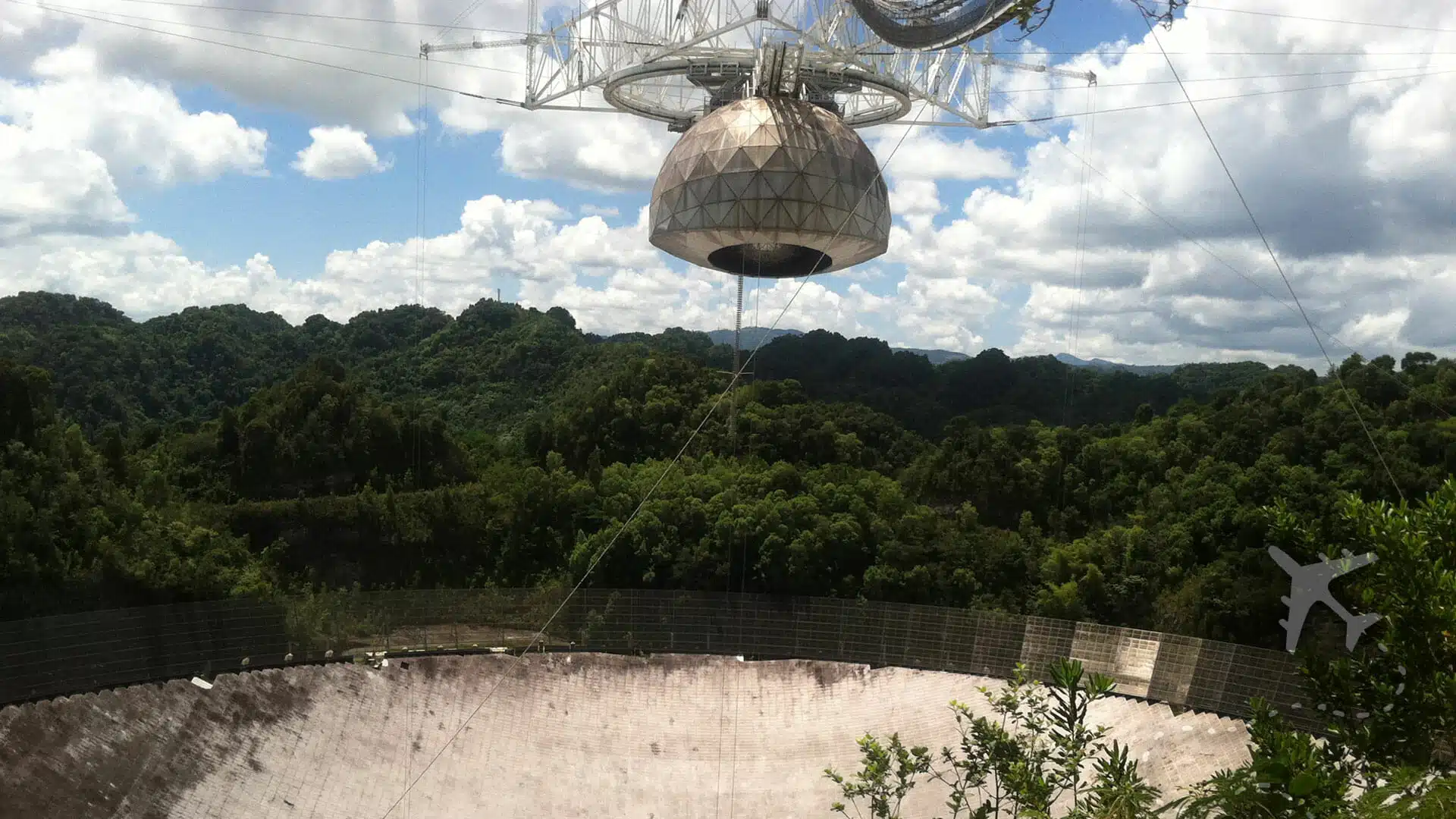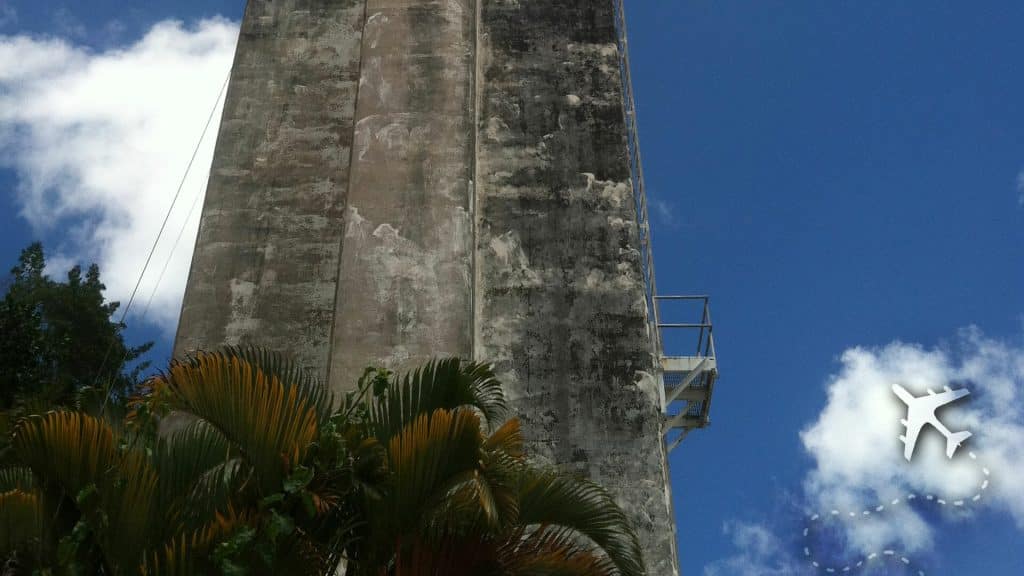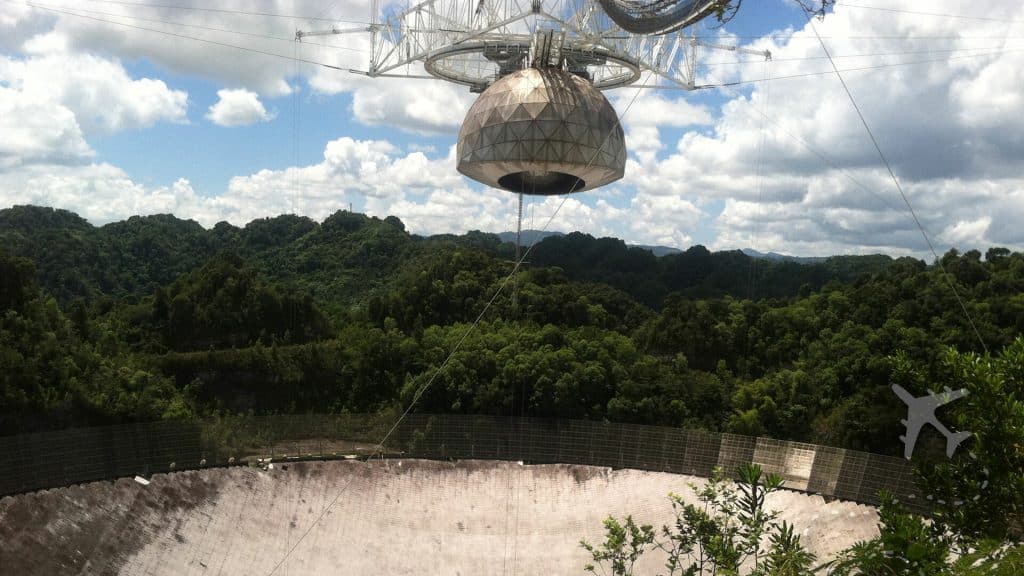Nestled in the lush, karst-dotted hills of Puerto Rico, the Arecibo Observatory was once humanity’s cosmic ear, listening to the secrets of the universe. Before its catastrophic collapse in 2020, it wasn’t just a scientific marvel but a destination that pulled in everyone from stargazers to James Bond fanatics. It was a place of awe, where science and pop culture collided, and now, its ruins stand as a haunting relic of what we once dared to dream.

The Arecibo observatory was permanently closed to visitors on November 19, 2020. Early in the morning of December 1, 2020, the 900-ton suspended main telescope catastrophically collapsed onto the reflector dish below. Rest in pieces (RIP)
DESTINATION: Arecibo Observatory
GPS COORDINATIONS
18.3442, -66.7526
CLOSEST AIRPORT
CURRENT WEATHER
clear sky (23 C / 73 F)
![]()
AIR QUALITY INDEX (AQI)
Good (28)
A History of Bold Ambition
Built in 1963 at the height of the Cold War, the Arecibo Observatory wasn’t just a telescope, it was the telescope, a 305-meter-wide dish that reshaped how we explored the universe. Carved into a natural sinkhole, the observatory was originally funded by the U.S. Department of Defense to study the ionosphere. But it quickly became a tool for far greater discoveries.
From detecting the first binary pulsar, an achievement that earned a Nobel Prize in 1993, to mapping Venus and tracking near-Earth asteroids, Arecibo was a powerhouse of exploration. It even played a pivotal role in the now defunct SETI@home, our attempt to eavesdrop on alien civilizations.
Hollywood’s Favorite Telescope
Arecibo wasn’t just a scientific giant; it was a cinematic one too. Its massive dish appeared in blockbuster hits like GoldenEye, where Pierce Brosnan’s James Bond fought Sean Bean’s treacherous 006 atop its suspended platform. In Contact, Jodie Foster’s character searched for extraterrestrial signals against the backdrop of the observatory’s awe-inspiring dish.
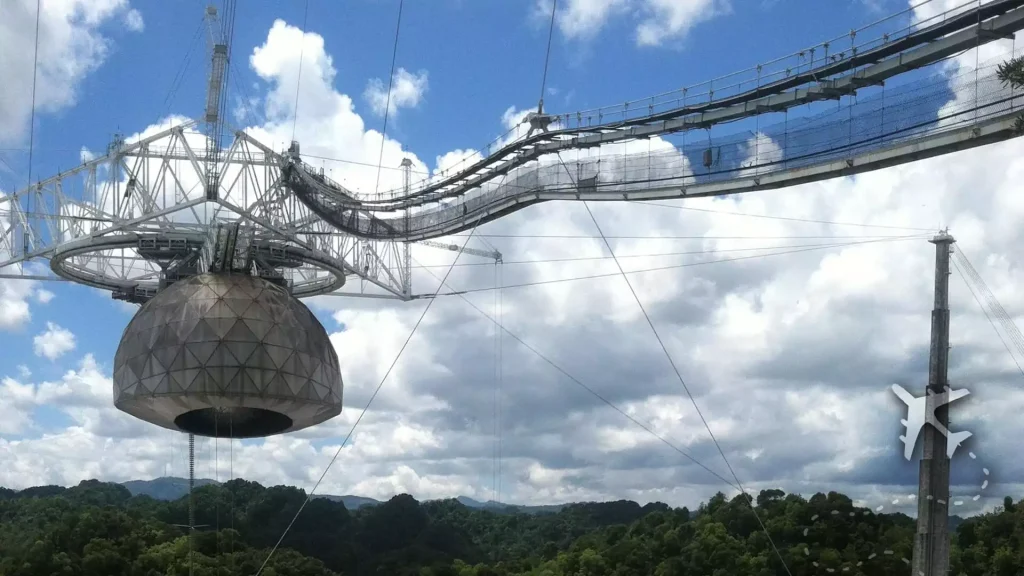
For decades, Arecibo wasn’t just a haven for scientists but a pilgrimage site for movie lovers and sci-fi enthusiasts alike.
A Visit Before the Collapse
Unless you grew up in Puerto Rico, chances are the Arecibo Observatory wasn’t on your travel bucket list. But I’ve never been one for the beaten path, so my 2012 journey to the Arecibo Observatory began with a 90-minute drive from San Juan, winding through Puerto Rico’s mountains and jungles. The route was an adventure in itself, with encounters ranging from free-roaming chickens and goats to the occasional (and sometimes optional) paved road.
As I ventured deeper into the wilderness, the gradual loss of cellular service was a telltale sign that I was nearing my destination. Soon, signs appeared, urging all visitors to power down cell phones and two-way radios.
When I arrived at the visitor center, I was greeted with, well, nothing. No lines, no crowds, not even a trickle of other visitors. The place was eerily quiet, and the staff’s warm welcome seemed to carry a hint of surprise, probably because I’d just driven into what felt like the middle of nowhere.
Stepping onto the observation deck before its 2020 collapse might have felt underwhelming to most, but for me, it was a profound experience fueled by my love of science. Seeing the towering cables suspending the colossal 900-ton platform high above the enormous dish was both humbling and surreal, a striking contrast of cutting-edge engineering against the untamed beauty of the surrounding jungle.
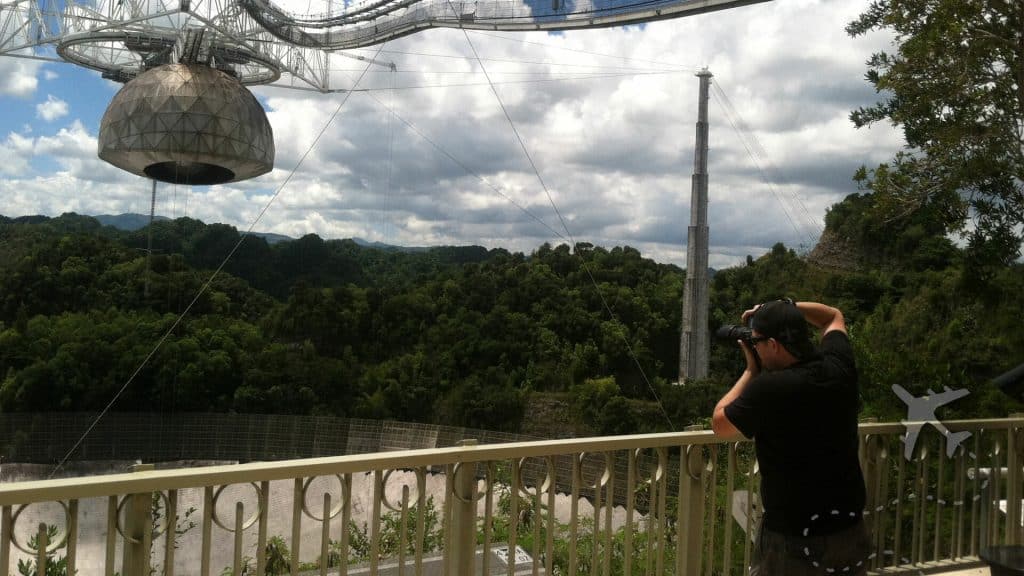
The Collapse: A Cosmic Tragedy
Eight years after my visit, on December 1, 2020, disaster struck when years of underfunding and neglect finally came together in Arecibo’s final and dramatic end. Two support cables snapped, sending the 900-ton platform crashing down onto the dish below, obliterating most of the facility, including the iconic dish and its towering supports. The collapse was caught on video, a heartbreaking sight for scientists and enthusiasts alike.
This wasn’t just a structural failure, it was a symbol of how easily we can lose what connects us to something greater. Nature reclaimed what we could no longer maintain, turning Arecibo into a ruin.
Why Dark Tourism?
Today, Arecibo’s remains are a chilling reminder of ambition and impermanence. Visiting the site now feels like walking through the bones of a once-great civilization. The jagged remnants of the dish, the twisted platform, and the encroaching jungle make for a scene straight out of a dystopian novel.
For travelers into dark tourism, the ruins of Arecibo are a must. Sadly, the site is not open to visitors and will likely never be re-opened to the public. Everything at the Arecibo Observatory represents human achievement’s fragility and nature’s raw power. The location and events are a chance to pay homage to what was and to reflect on what could have been if we’d cared for it better.
Rest in pieces.


